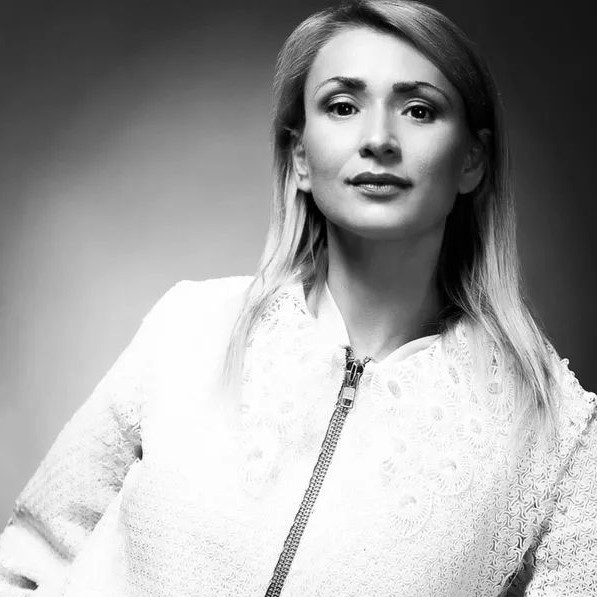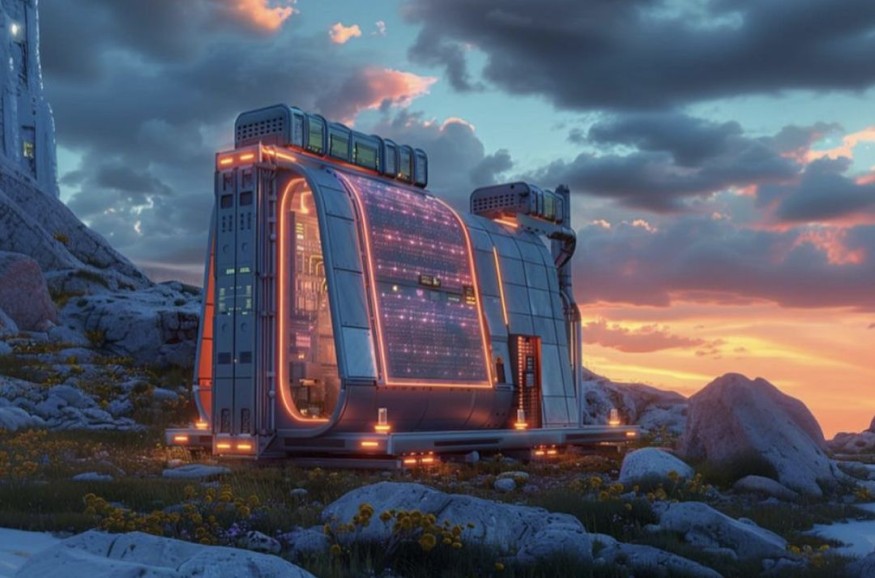As the climate crisis intensifies, it's clear that solving the planet's biggest problems will take more than just good ideas—it will require an all-out, marathon-level effort to scale those solutions fast.
Every day, we face new challenges—rising global temperatures, shrinking biodiversity, and resource scarcity. Yet, the response to these crises often feels frustratingly slow. Julia Daviy, a seasoned sustainability innovator and impact investor, believes it's time for a change. Her proposal? An 'Ironman-level competition' for scaling sustainable innovations—because the race to save the planet requires the same endurance, discipline, and commitment as the world's toughest endurance sports.

Having worked at the intersection of technology, sustainability, and economics for over two decades, Daviy is no stranger to bold thinking. From pioneering 3D-printed sustainable fashion—including the first 3D-printed clothing commercially sold in the U.S.—to leading clean energy industry development in Eastern Europe, her work has consistently pushed boundaries. Now, through her 365 Sustainable Innovation Challenge, she's taking on an even greater challenge: proving that we don't just need new ideas but that we must scale them at an unprecedented pace to make a real impact.
Why Innovation Needs an 'Ironman' Mindset
The Ironman triathlon is known as one of the toughest tests of human endurance, requiring participants to push their limits in strength, focus, and sheer willpower.
Competitors in an Ironman face an exhaustive challenge: a 2.4-mile swim, a 112-mile bike ride, and a 26.2-mile marathon, all in one day. As an Ironman finisher herself, Julia Daviy believes the fight against climate change demands the same relentless drive—not just to come up with solutions but to scale them rapidly and effectively.
"Generating ideas is crucial, but it's only the beginning," says Daviy. "Just as finishing an Ironman demands endurance beyond the starting line, scaling innovations is the key to making a tangible impact on the planet."
Daviy draws on her own experience as both an innovator and a founder of climate tech startups and nonprofits. She knows firsthand how difficult it is to take a concept from the drawing board to large-scale adoption. The process is often slow, bogged down by regulatory hurdles, lack of investment, or insufficient infrastructure.
To address this, she envisions a global competition—an Ironman race for sustainable innovation—where governments, investors, and innovators collaborate to scale the most impactful ideas rapidly. The stakes have never been higher, and the race to implement solutions at scale must match the urgency of the problems we face.
Five Innovation Concepts That Highlight the Need for Speed
Daviy's 365 Sustainable Innovation Challenge showcases the diversity and creativity needed to tackle global real-world issues. Since starting the project, she has created over 330 solutions, each designed to tackle issues like climate change, pollution, and resource shortages. Her work spans industries from energy and agriculture to fashion and urban planning. What makes these innovations stand out is that they are not just concepts; they are designed to be implemented and scaled.
Here are five of her most promising innovations, each illustrating the need for an Ironman-level approach to sustainability:
1. The Quantum-Nucleus Fusion Energy System

The Quantum-Nucleus Fusion Energy System concept combines quantum dot-enhanced photovoltaics with nuclear-powered photon generation to provide continuous, reliable energy, regardless of environmental conditions. This hybrid system is envisioned to deliver 24/7 clean energy using cutting-edge advancements in quantum dots and nuclear technology.
"We need energy solutions that work 24/7, not just when the sun is shining or the wind is blowing," Daviy says. "Such systems could revolutionize clean energy, but we need the right support to make it a reality."
2. HydroCaps: The Future of Hydrogen Storage
HydroCaps, a solid-state hydrogen storage concept, encapsulates hydrogen in a stable chemical form, releasing it on demand. These capsules address the main challenges of hydrogen storage—its low energy density and transportation difficulties. Hydrogen is viewed as a crucial component of the clean energy transition, but without better storage and transport options, its potential remains limited. HydroCaps could change that, but scaling this technology will require significant investment and infrastructure development.
"Hydrogen is key to our clean energy future, but it won't happen without the right tools for storage and delivery," Daviy explains. "HydroCaps or similar concepts could be that solution, but we need to act fast."
3. Utilizing Bridges and Overpasses as Urban Bird Nesting Towers

In an innovative take on urban biodiversity, Daviy proposes converting underutilized spaces beneath bridges and overpasses into bird nesting towers. This solution would provide safe, sheltered habitats for birds in urban environments, helping to restore biodiversity in cities while utilizing existing infrastructure. It's a simple yet effective idea, but scaling it will require coordination with city planners, architects, and government officials—making it a perfect example of how innovative ideas can be hampered by bureaucratic hurdles unless we find ways to speed up implementation.
"We have so much underutilized space in cities," Daviy says. "With a bit of creativity, we can turn these areas into ecosystems that benefit both wildlife and people."
4. CO2 Visualization Smart Glasses
Daviy's CO2 Visualization Smart Glasses concept uses augmented reality to make carbon emissions visible in real time. Such glasses would allow users to see the environmental impact of their surroundings—whether it's the CO2 emissions of passing cars or pollution from nearby factories. This tool could be transformative in raising awareness about carbon footprints.
"Making pollution visible could change how we think about our impact on the planet," Daviy says.
5. TurbineFlow Signage: Wind Power from Traffic

The TurbineFlow Signage concept integrates small wind turbines into urban road signs, harnessing the airflow generated by passing vehicles to generate electricity. This energy can then be used to power nearby infrastructure, such as streetlights or EV charging stations. The idea is both practical and elegant, turning everyday traffic into a source of renewable energy. However, implementing this innovation at scale would require significant investment in urban infrastructure and collaboration with city planners.
"Every time a car passes by, we're missing an opportunity to generate power," says Daviy. "TurbineFlow turns that wasted energy into something valuable, but we need cities to embrace it on a large scale."
Scaling Innovation
For Daviy, the Ironman race to scale sustainable innovation requires more than just passionate entrepreneurs. It requires a global effort from investors, governments, and regulatory bodies to create the conditions necessary for these ideas to thrive. Impact investors, in particular, play a critical role. As someone who works closely with startups, Daviy understands that capital is essential for turning ideas into scalable solutions.

"Investors are the coaches in this race," Daviy explains. "They provide the resources, support, and guidance needed to help innovations cross the finish line."
At the same time, policymakers must create environments that encourage innovation. Regulations that support clean energy, biodiversity, and sustainable technologies are crucial to ensuring that promising ideas can be implemented and scaled rapidly.
The climate crisis is not a distant threat—it is happening now, with profound consequences for our environment, economy, and societies. Daviy's call for an Ironman-style competition to scale sustainable innovations is a recognition of the urgency we face.
"The race to scale sustainable solutions is one we can't afford to lose," Daviy says. "It's going to take endurance, focus, and the willingness to push beyond what we thought was possible. But if we work together, we can win."
As Julia Daviy's innovations show, the ideas are there. What's needed now is the collective will to implement them at scale, creating a more sustainable future for all.
© 2026 ScienceTimes.com All rights reserved. Do not reproduce without permission. The window to the world of Science Times.










